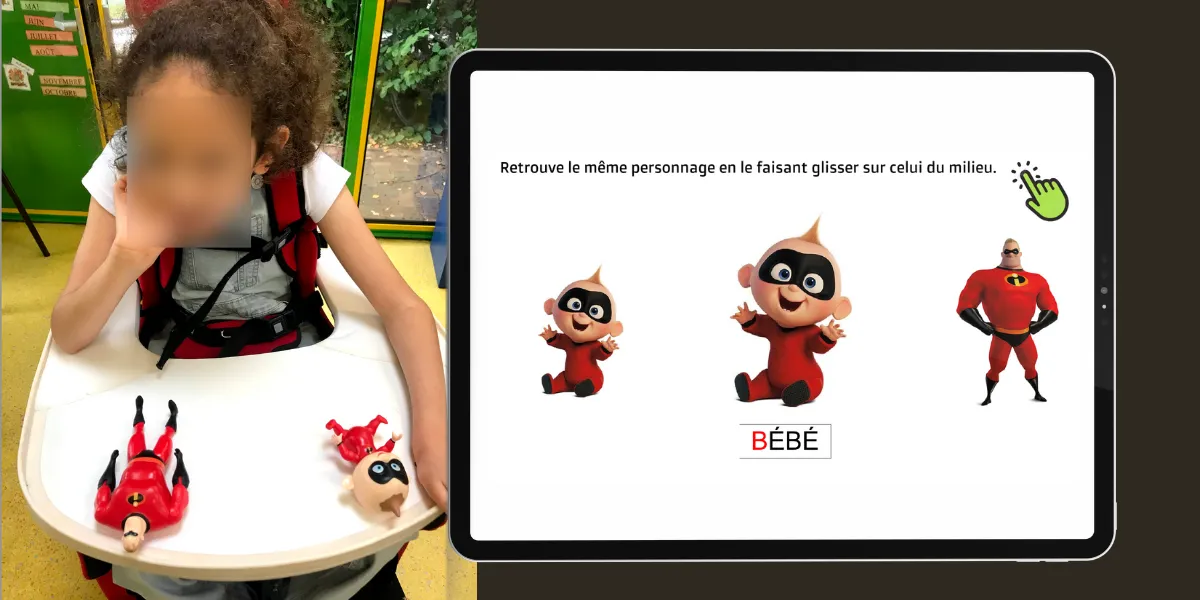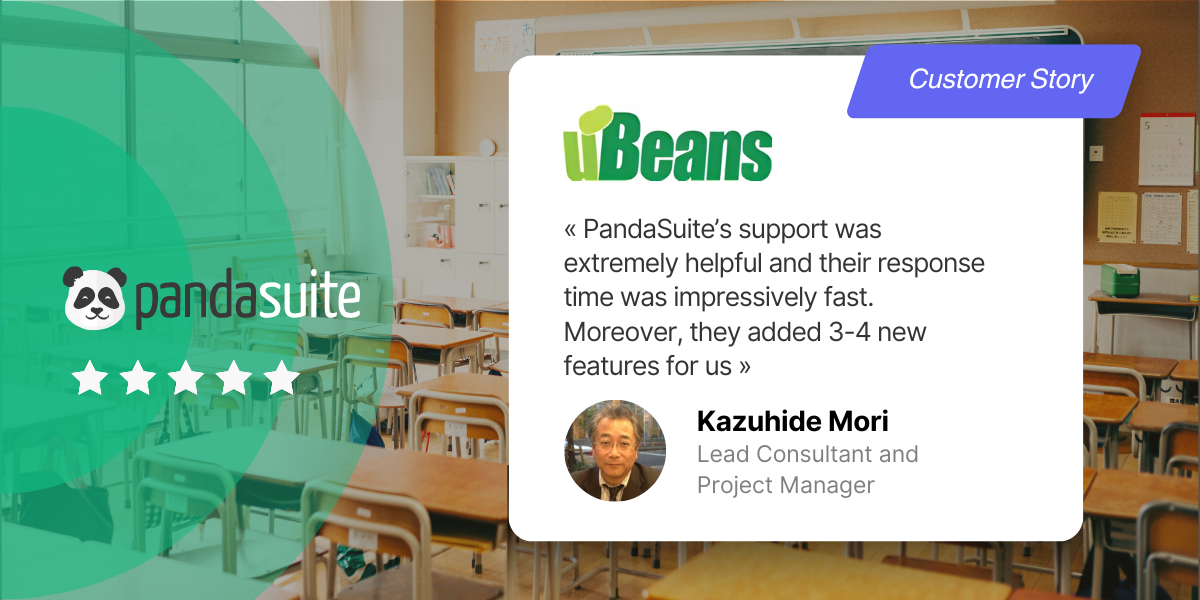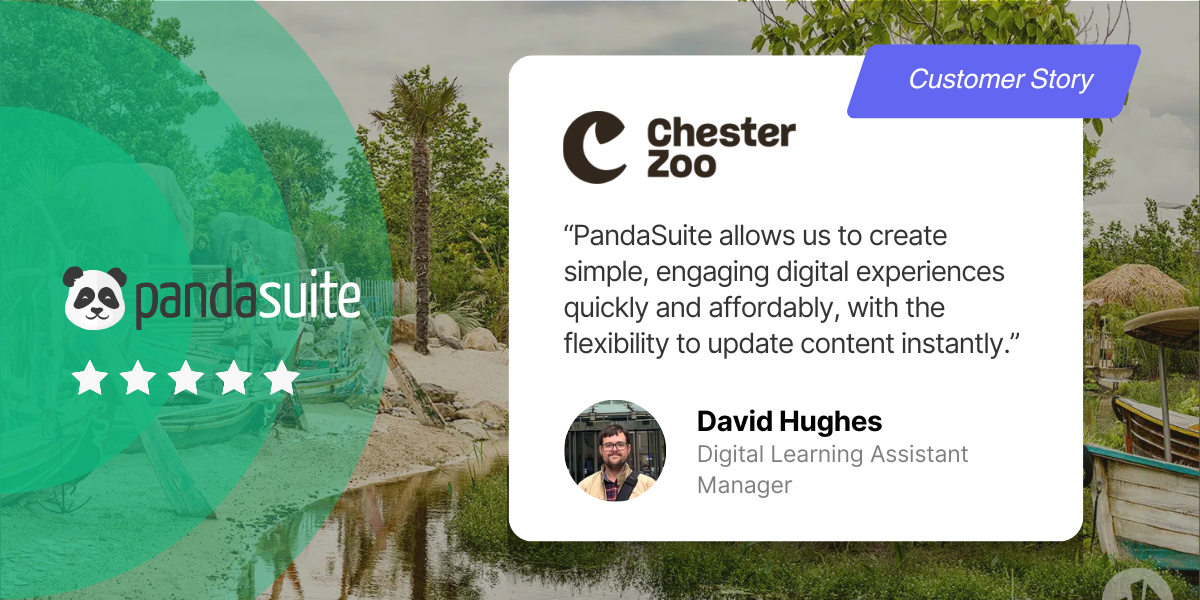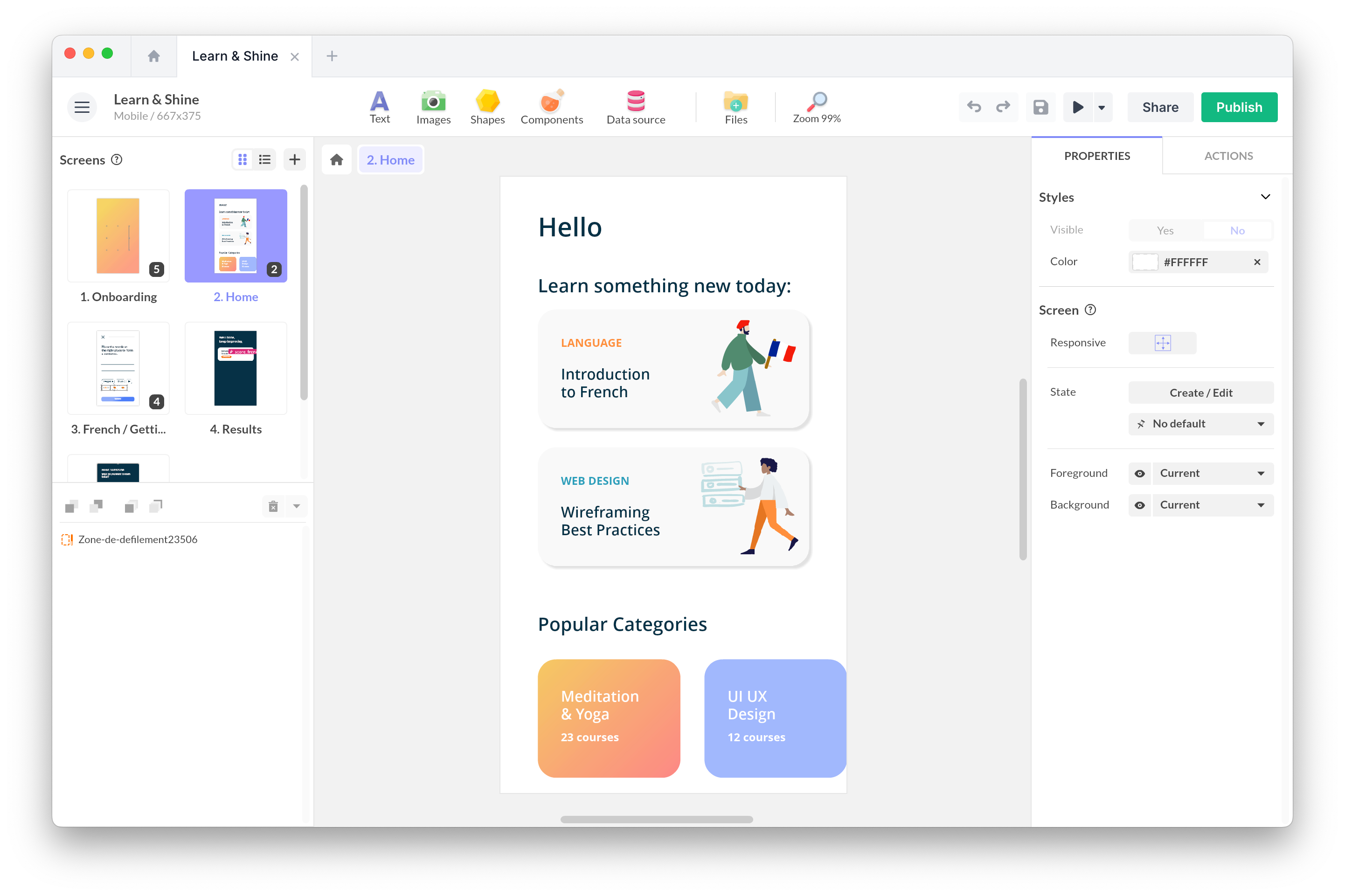Thu, Oct 30, 2025
Multiple Disabilities: How to Teach Differently with PandaSuite

Two special education teachers, Clarisse Cresson and Sonia Garcia, use the no-code platform PandaSuite to design interactive learning materials adapted for children with multiple disabilities. Their approach highlights the crucial role of digital tools in educational innovation for students with severe disabilities.
Teaching Differently Through Digital Technology
Clarisse Cresson and Sonia Garcia, special education teachers working with children aged 3 to 23 with multiple disabilities, have made digital technology a driver of inclusion. Using the no-code PandaSuite platform, they design interactive learning applications tailored to each student, strengthening the connection between school and home.
These are young people with cognitive, motor, and sensory impairments who rely on constant human and technical support, explains Clarisse.
Their approach tackles a dual challenge: addressing very specific educational needs while making digital technology accessible to everyone. Together, they lead the Poly-Handicap 93 collective and co-founded Polypop, an association that offers holistic support to families affected by multiple disabilities while guiding educators, healthcare, and social professionals in their daily practice.
There’s almost no educational literature on multiple disabilities. Sharing our experiences and creating tools for often-isolated families is essential.
A Digital Commitment Accelerated by the Pandemic
The Covid-19 lockdown marked a turning point for these two teachers committed to pedagogical innovation. Faced with school closures and the distress of families, Clarisse and Sonia looked for ways to maintain educational stimulation remotely and strengthen continuity of learning.
Many families were left without solutions. The children were at home, and parents didn’t know how to continue schooling or keep them engaged.
They turned to PandaSuite, which allowed them to create custom interactive modules - visually simple, rich in content, and adaptable to each student’s motor, visual, or cognitive profile.
With PandaSuite, we can personalize everything. We use family photos, familiar objects, and sounds to create a connection. Even with simple visuals, it’s powerful for children because it’s not overloaded or distracting.

Tablets and smartphones- already common at home - thus become inclusive educational tools: accessible, tactile, customizable, and bridging school and home environments.
Adapting Learning to Each Ability
With PandaSuite Studio, Clarisse and Sonia design progressive activities that develop eye-tracking, motor coordination, and symbolic communication.
An exercise triggers a sound and an object that moves across the screen. One student, who couldn’t move her head, followed with her eyes. By helping her point with a stylus, she eventually did it on her own. It was a remarkable breakthrough.
Drag-and-drop and interactive scratch actions become mediators for engagement: moving an object on screen means acting, choosing, learning. These digital experiences translate daily gestures into interactive learning.
Interactive rhymes, animated stories, and sensory games help children work on essential concepts such as “stop” and “again” — the building blocks of communication.
That’s exactly the kind of vocabulary they need to start communicating.
Clarisse and Sonia use an Interactive Digital Board or a tablet depending on each student’s needs and abilities. The IDB allows them to project an activity on a large screen, engaging the entire class or small groups in the same interactive experience.
Breaking Family Isolation Through Digital Learning
PandaSuite also promotes continuity between school and home. The applications are shared via secure links or QR codes, allowing parents to extend learning activities and maintain engagement.
Parents see their children react, smile, and interact with familiar sounds and photos. It recreates presence and connection - even from a distance.
Families with limited resources particularly benefit, since many specialized communication tools are costly or hard to access. PandaSuite stands out for its flexibility and affordability.
Challenges: Training, Equipment, and Recognition
Despite their passion and creativity, Clarisse and Sonia face structural challenges: a lack of digital equipment in institutions, limited teacher training in educational technology, and the hybrid status of medico-social institutions caught between education and care.
The technology exists, the laws for inclusion exist, but the resources don’t always follow. Often, it’s committed individuals who take the lead.
While tablets and adapted switches exist, truly tailored digital programs and institutional support are still lacking. The shortage of training slows down broader adoption.

Experimenting, Innovating, Sharing
Always exploring, the two teachers keep testing PandaSuite’s features: trigger sounds, progressive interactions, and simple gestures translated into digital actions.
For example, one student who could barely move her arm could ‘scratch’ the screen to trigger an action. It was the first time she could act meaningfully.
Their dream: to design augmentative and alternative communication (AAC) applications allowing students to compose sentences using pictograms and sounds - a tool that PandaSuite could make accessible to both schools and families.
PandaSuite already enables so much, but we’re still figuring out how to link words together. Creating customizable, affordable communication tools would be incredible for families and schools.
At the same time, Clarisse and Sonia share their expertise through training sessions and tutorials for teachers, building a true community of practice.

A Message to Teachers and Decision-Makers
They encourage educators and policymakers to see digital technology not as a distraction, but as a genuine pedagogical tool, especially vital for the most vulnerable learners.
We need to show teachers what these tools can do and what learning objectives they support. Digital learning develops key prerequisites for our students.
They also advocate for more creativity - among both teachers and students - to build personalized learning experiences aligned with digital literacy and coding curricula.
Imagine if children could create their own applications tailored to their needs - it would be revolutionary.
Conclusion
Clarisse and Sonia’s journey demonstrates the power of passionate teachers supported by adaptable technologies like PandaSuite. Despite institutional barriers, their creativity and commitment are paving the way toward truly inclusive education, where students become active participants in their own learning.
About the Polypop Association
Founded by Clarisse Cresson and Sonia Garcia, the Polypop Association extends their commitment to supporting children with multiple disabilities. It brings together families, teachers, and professionals around a shared goal: to exchange practices, tools, and experiences that improve the daily lives of children with complex needs.
Polypop offers training programs, inclusive digital resources, and collaborative spaces that promote cooperation between education and healthcare sectors. Through its website and social media, the association spreads a culture of inclusion and highlights innovative initiatives that use digital tools as a lever for learning.
Learn more: polypop.fr and follow them on Instagram @Polypop93
Contact the association: [email protected]
Ready to create your own innovative learning adventure? Discover PandaSuite and unleash your creative potential for inclusion! 💜


